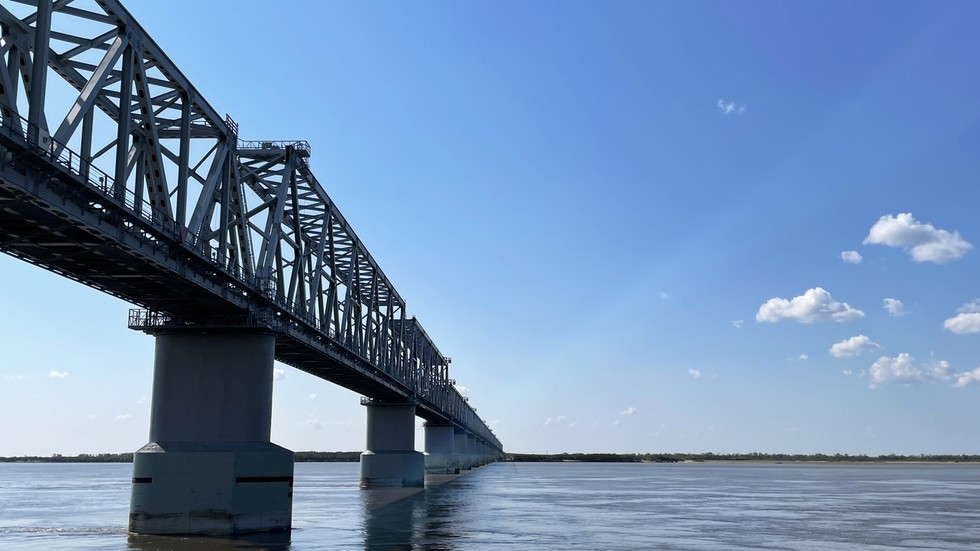
Cargo traffic via a new rail bridge has been growing since its opening, according to Moscow

© Sputnik / Aleksandr Muzyka
The volume of cargo transported via a new rail bridge across the Amur River linking Russia and China exceeded 540,000 tons during the first four months of its operation, according to the Russian Direct Investment Fund (RDIF).
“Since the [bridge’s] launch in November 2022, traffic has increased more than five times, with over 130 trains having passed across the bridge” the RDIF said in a statement on Tuesday.
It noted that checkpoints on the bridge will be switched to round-the-clock operation during the next two months due to increased freight traffic, with the frequency of trains expected to double.
Construction of the first-ever rail bridge between the two countries officially began in 2016, after 28 years of negotiations. The RDIF financed more than 70% of the construction of the Russian section.
The overall length of the new route and associated infrastructure is 19.9 kilometers. Nearly 6.5km of the bridge and road junctions run in China, and the remaining 13.5km are located in Russia.
READ MORE: Why China is so important for the Russian economy
The highway section of the bridge over the Amur River was completed in 2019. Russia has been exporting iron ore, coal, mineral fertilizers, lumber and other goods via the link to China, which provides a far more direct route than the alternatives.
Trade between Russia and China grew by nearly a third in 2022, reaching $185 billion, making Moscow the leader among China’s 20 largest partners in terms of trade growth. The two countries are on pace to reach $200 billion in trade this year.
For more stories on economy & finance visit RT’s business section




